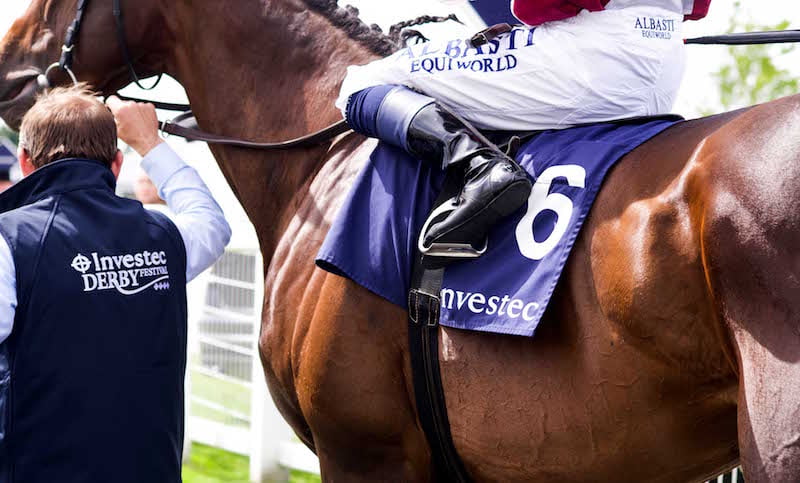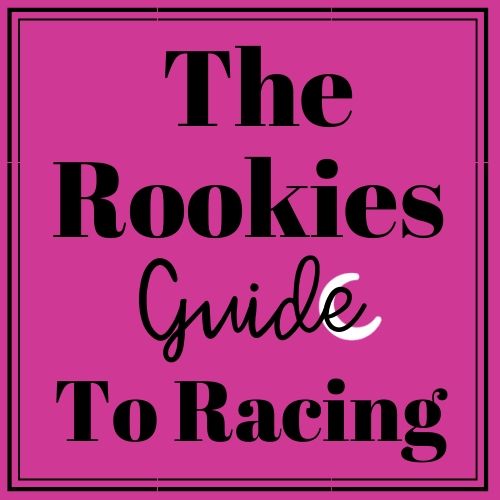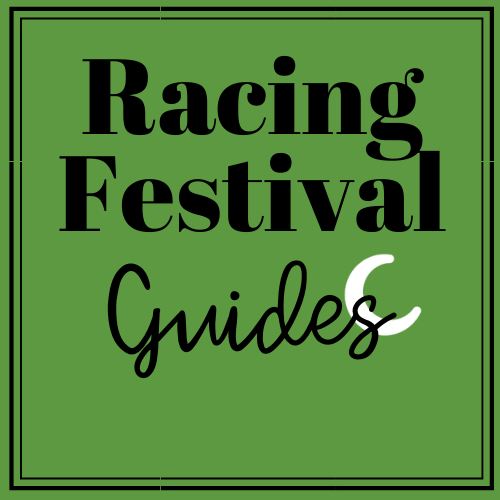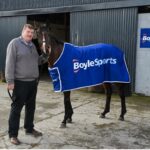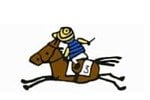The 2nd June, 1971, was the day that Ian Balding’s name became eternally synonymous with the Derby. That is the way of things when one trains a racehorse numbered among the greatest athletes ever to grace the famous Epsom Downs turf.
Mill Reef was the embodiment of perfection on that sun-kissed Wednesday afternoon. The dark bay colt raced with immaculate grace, cruising round Tattenham Corner before progressing with fluent rapidity inside the final quarter-mile to clinch the spoils by two lengths from Linden Tree.
Balding was 32 at the time and had already notched seven seasons at the helm of Park Stables, Kingsclere. He had been thrust into that role upon the unexpected death of his boss, Peter Hastings-Bass, in June, 1964.
Born in New Jersey on 7th November, 1938, into a family with a deep equestrian heritage, Balding was destined to continue the traditions of his forebears.
His father, Gerald Balding, the son of a successful horse dealer, was a 10-goal polo player who captained England after leaving Rugby school and trained a few jumpers at Weyhill, Hampshire, upon returning to England after the war with his American wife, Ellie, and young family.
Sporting pursuits – boxing, cricket, squash, football and polo among them – dominated Balding’s school days at Marlborough College and he progressed to earn a rugby blue – but no degree – from Cambridge University, while simultaneously evolving into one of the country’s most talented amateur jockeys, gaining over 70 winners.
He would ride Time to win the 1963 National Hunt Chase at the Cheltenham Festival, a few years after partnering Playroom to win the “Amateurs’ Derby” at Epsom Downs.
After leaving Cambridge in 1962, Balding joined Herbert Blagrave’s training establishment at Beckhampton and rode as stable amateur to his brother Toby Balding at Fyfield.
Having joined Hastings-Bass at the start of the 1964 Flat season, the young assistant suddenly found himself the reluctant master of a prestigious establishment that numbered the Queen among its newest patrons. Balding took on the mantle and made it his own. Within weeks, he had notched a pair of Royal Ascot victories thanks to Silly Season in the Coventry Stakes and Linnet Lane in the Bessborough Stakes.
Silly Season was the first of many top-class horses to pass through Balding’s hands at Kingsclere. He was also the trainer’s first Derby runner. Having finished second to Niksar in the 2,000 Guineas, the colt failed to stay the mile and a half at Epsom, crossing the line a tenderly handled 13th behind the great Sea Bird.
Silly Season went on to win the St James’s Palace Stakes at Royal Ascot that season and landed the Lockinge Stakes as a four-year-old, providing some momentous peaks for Balding and initiating a long and fruitful relationship between the trainer and the colt’s owner, the American philanthropist and Anglophile Paul Mellon.
But it was the exceptional Mill Reef who cemented the Balding/Mellon axis and brought them big-race triumph on the Downs, not once but twice.
An outstanding juvenile, the Never Bend colt posted stunning victories in the Coventry Stakes, Gimcrack and Dewhurst. His Classic season commenced withsuccess in the Greenham Stakes at Newbury but disappointment followed at Newmarket when Brigadier Gerard swept past him to triumph in a vintage renewal of the 2,000 Guineas.
With Brigadier Gerard, arguably the greatest miler of the last century, not entered at Epsom, Mill Reef reigned supreme.
Balding himself had a much less smooth passage around Epsom that day than did his conquering hero. The trainer became stuck in traffic and, desperate to make it to the course in time to saddle a runner in the first race, abandoned automotive means in favour of a steady two-mile jog to the racecourse, resplendent in top hat and tails.
Mill Reef went on to establish himself among the greats of the Turf with victories in the Eclipse Stakes, the King George VI & Queen Elizabeth Stakes and the Prix de l’Arc de Triomphe, when he became the first British-trained winner of the Paris showpiece since Migoli, 23 years earlier.
His exploits in 1971 helped Balding become champion trainer in Britain.
Mill Reef’s second Epsom triumph, in the 1972 Coronation Cup, did not match the perfect display of his first but it was both historic and admirable, nonetheless. After a scintillating success on his four-year-old debut in the Prix Ganay, the below-par champion battled through sickness to hold off Homeric by a neck and register his sixth successive Group One victory, a record that would stand for 31 years.
A broken leg sustained later that summer meant that the great colt did not get the opportunity to add to his haul but his sons Shirley Heights (1978) and Reference Point (1987) both emulated their sire with Epsom Derby success.
For the next three decades, Balding nurtured a steady flow of excellent equine talent. The 1980s saw two of Mill Reef’s sons, Diamond Shoal and Glint Of Gold, annex a clutch of continental Group One races for the trainer, as did Gold And Ivory, while Robellino and Dashing Blade were highly talented two-year-old colts.
That same decade brought the exceptional fillies Mrs Penny and Forest Flower, Classic winners both, as well as Silver Fling, the speedy heroine of the 1989 Prix de l’Abbaye at Longchamp.
Balding placed his horses well, particularly abroad where there was high prize money and less competition and he was the leading British trainer overseas on three occasions.
But it was the early 1990s that came closest to revisiting the unsurpassable achievements of the Mill Reef years. George Strawbridge’s strapping chestnut colt Selkirk was twice crowned champion miler, while Lochsong captured and kept a tight grasp on the public’s attention and Crystal Spirit clinched a Cheltenham Festival success.
More than any of his stable stars, Lochsong was perhaps the horse that showcased Balding’s talent and experience as a racehorse trainer. A big, unsound individual, Jeff Smith’s powerhouse filly pulled off the incredible feat of winning three of the season’s biggest handicap sprints in 1992, the Stewards’ Cup, the Portland and the Ayr Gold Cup.
The following two seasons belonged to Lochsong. Despite increasing temperament issues, Balding primed her for trail-blazing successes in the Nunthorpe Stakes at York, the King’s Stand at Royal Ascot and back-to-back triumphs in the Prix de l’Abbaye at Longchamp. She was the only sprinter that decade to win the Cartier Horse of the Year Award, an accolade she received in 1993.
Balding retired at the end of the 2002 season and continues to live at Kingsclere with his wife of almost 41 years, Emma, daughter of Peter Hastings-Bass, who played an integral part in his training career and runs Kingsclere Stud.
He enjoyed over 2,000 successes, including triumphs in 41 Group One races, 33 Group Two contests, 49 Group Three events and 60 Listed races.
Andrew Balding took over as master of Park House Stables upon his father’s retirement and maintained family success in Epsom Downs Classic by saddling Casual Look to win the 2003 Investec Oaks, prompting emotional scenes on the BBC as his sister Clare, the award-winning broadcaster and journalist, was left nearly speechless.
A total of 13 Epsom Classic winners have been trained at Kingsclere since the legendary John Porter sent out Blue Gown to win the 1868 Derby and Ian Balding continues to play an influential role in ensuring the legacy continues in safe hands.
He is also a director of Salisbury Racecourse, a member of the Racehorse Owners Association council since 2006, a director of the Amateur Jockeys’ Association and a trustee of the Injured Jockeys’ Fund among other roles in the racing world.
Ian Balding Recalls…
Ian Balding, the trainer of the exceptional 1971 Derby winer Mil Reef, said: “It was a great thrill to be asked to be the Investec Derby Festival Guest of Honour [in 2010].
“I have ridden a winner over the Derby course and trained a Derby winner and I think I have owned a winner here too.
“I have always adored Epsom. The first time I came was probably when I won the amateur riders’ Derby here on Playroom some 50 years ago.
“I remember that wonderful feeling two and half furlongs out as I was going so well that I was sure I was going to win.
“It is astonishing – the unique nature of this track. It is brilliant and, while the Derby is a tremendous test for relatively immature three-year-olds, the Classic has consistently seen wonderful horses win.
“I can remember riding at Epsom as if it were yesterday. The track rode much better than I ever expected. Admittedly I was on an experienced handicapper but coming down the hill and around Tattenham Corner at speed was a thrill I will never forget. I never noticed the camber but I won fairly comfortably.
“Mill Reef had a lot of speed and was able to get into the right position in the Derby. He always looked like he would win. Stamina was an issue at the time because he had never run more than a mile. We had no idea and a lot of people thought he had too much speed to stay a mile and a half.
“He had been a fantastic two-year-old and I think he and Crepello are the only Derby winners to have won over five furlongs. He had tremendous speed and he turned out to be one of those rare horses who the further they went the faster they went which we did not know before the Derby.
“I literally had to run two miles to get to the course – it was the first year of the underpass and the police in their wisdom were directing all the cars that way. So every car was coming from the South-West and we hit a jam and sat there for 20 minutes. I got out, leaving my wife and mother-in-law in the car, and ran the rest of the way.
“I got to the track in time to saddle a runner in the previous race and they arrived just five minutes before the Derby was run. Paul Mellon [Mill Reef’s owner] was almost in complete shock afterwards as he was so excited. It was wonderful that a man of his distinction thought that day was the greatest achievement of his life, breeding and owning a Derby winner.
“I shall probably walk the track early on this year as I love it and Epsom have done so well with the ground. This is the best turf in England. It is traditional downland turf which has been well watered every year to keep it in perfect condition. They have done a great job. I don’t have the pressures and worries of training when I watch the Derby now so I can really enjoy the day.”
Allison is the Publisher of Eclipse Magazine. She loves going to the Races and is learning to bet (despite being officially the worst bettor in the History of the Universe), there’s a lot more to learn…


